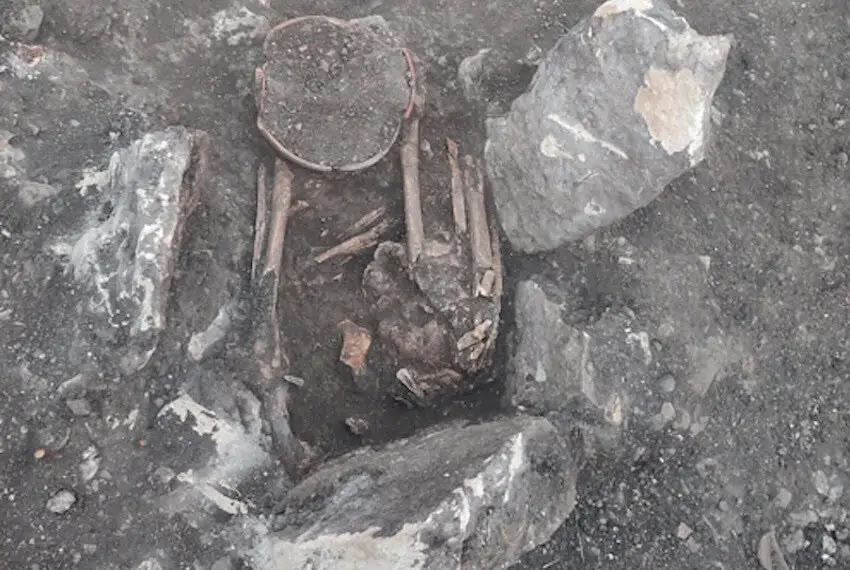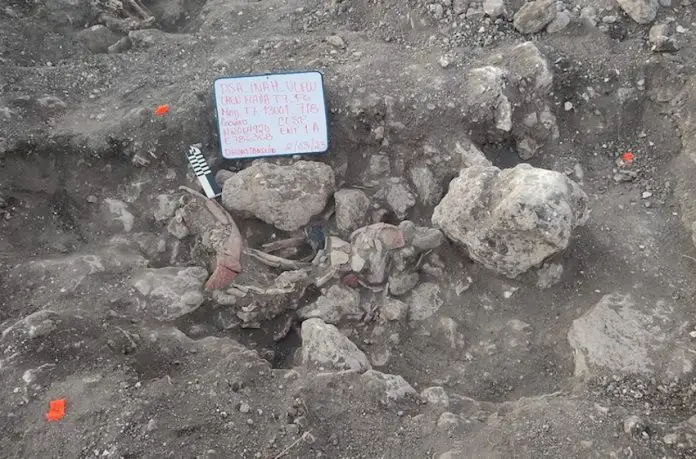The Maya Train project continues to pay dividends for archaeologists.
The National Institute of Anthropology and History (INAH) this week disclosed findings uncovered by archaeologists at 26 ancient Maya burial sites found along the Maya Train route, which runs through the Yucatán peninsula.

The burial sites were found along Section 7 of the Maya Train, an east-west route that extends 256 kilometers from Chetumal in the state of Quintana Roo to Escárcega in Campeche. After the section was surveyed in late 2022, INAH explored along the route and identified potential pre-Columbian archaeological sites.
Excavations began in February 2023 and dig sites were established, primarily in the 36-km stretch between the present-day villages of Constitución and El Lechugal, Campeche. Though some segments of the Maya Train were built in close proximity to ancient Maya cities, there was no previous record of extensive settlements in this area.
As the digs progressed, scattered structures were discovered: a few plazas and terraces and modest residential buildings. As the excavations continued, archaeologists uncovered human bones, many of which were found in cist graves or small stone-built, coffin-like boxes used for individual burials.
In a few of the sites, archaeologists found ceramic funerary objects, allowing them to date the burials to somewhere between the Early and Late Classic periods (250-900 A.D.)
Among their discoveries was a collection of four burial sites within a single residence. Two of the four bodies were in cist graves, in flexed position with several ceramic objects placed along their sides and at their feet.
Another noteworthy find was a grave about 1.5 meters deep in the middle of a plaza, likely signifying that the body was dedicated to the monuments discovered on the southern end of the plaza.
On the northern side of that same plaza, excavations unveiled three tombstones ranging from 45 cm to 70 cm in size. The INAH archaeologists have speculated that these could have been part of the facade of the main structure or served as lintels.
Although the remains are in poor condition, INAH hopes they will provide some information about the diet and origin of the Maya peoples in the area.
Surveys of the area surrounding the digs revealed that the closest water source was the Silvituc lagoon, though INAH also found evidence of chultuns (bottle-shaped underground chambers used to capture rainwater).
In late May, INAH reported that archaeologists had found 9,700 monuments, walls and artifacts along a 34-km stretch of Section 7 just a few miles east of Constitución. The newspaper La Jornada reported that this was the greatest concentration of artifacts yet uncovered along the Maya Train route.
Reports from Aristegui Noticias and La Jornada
